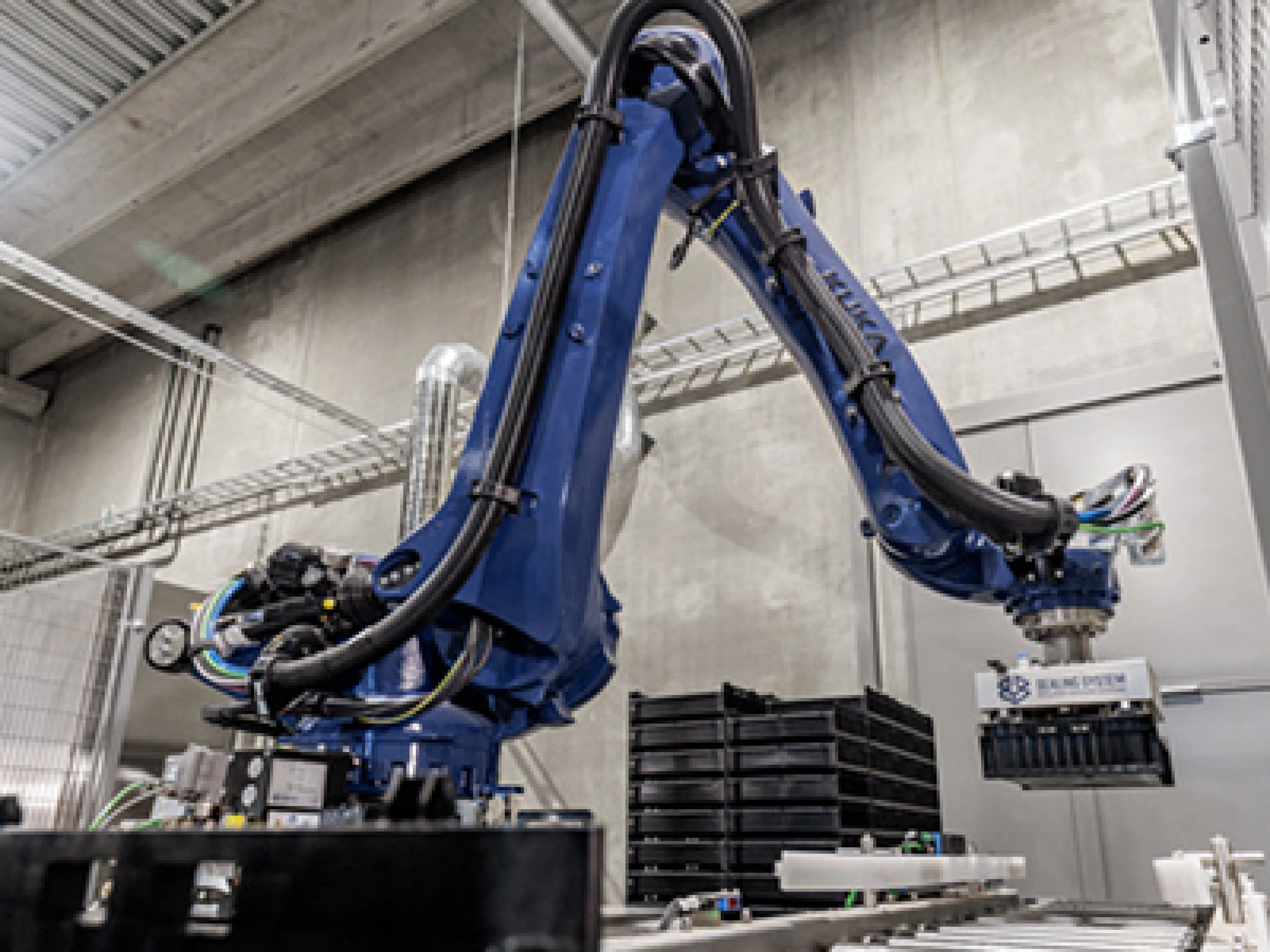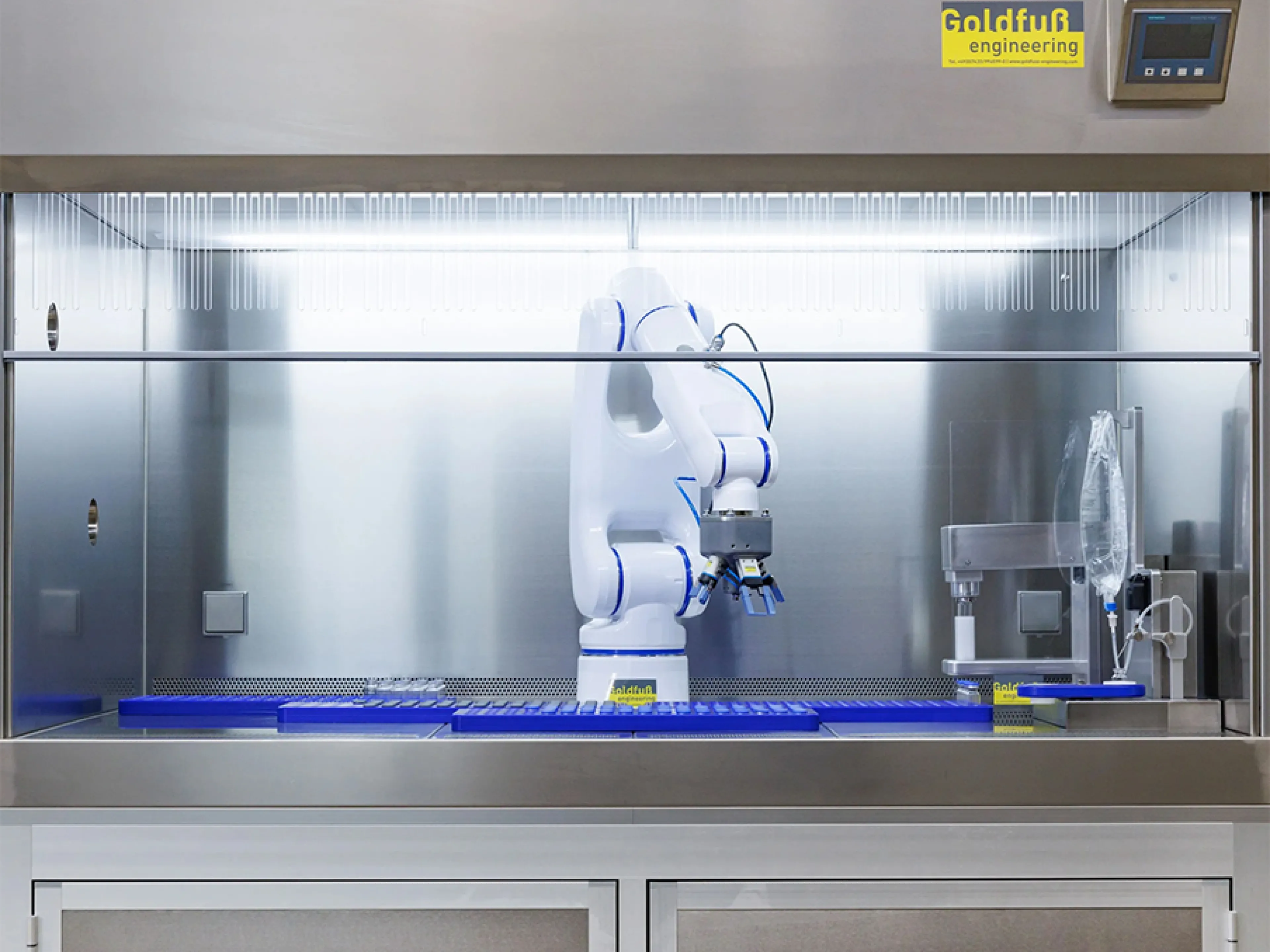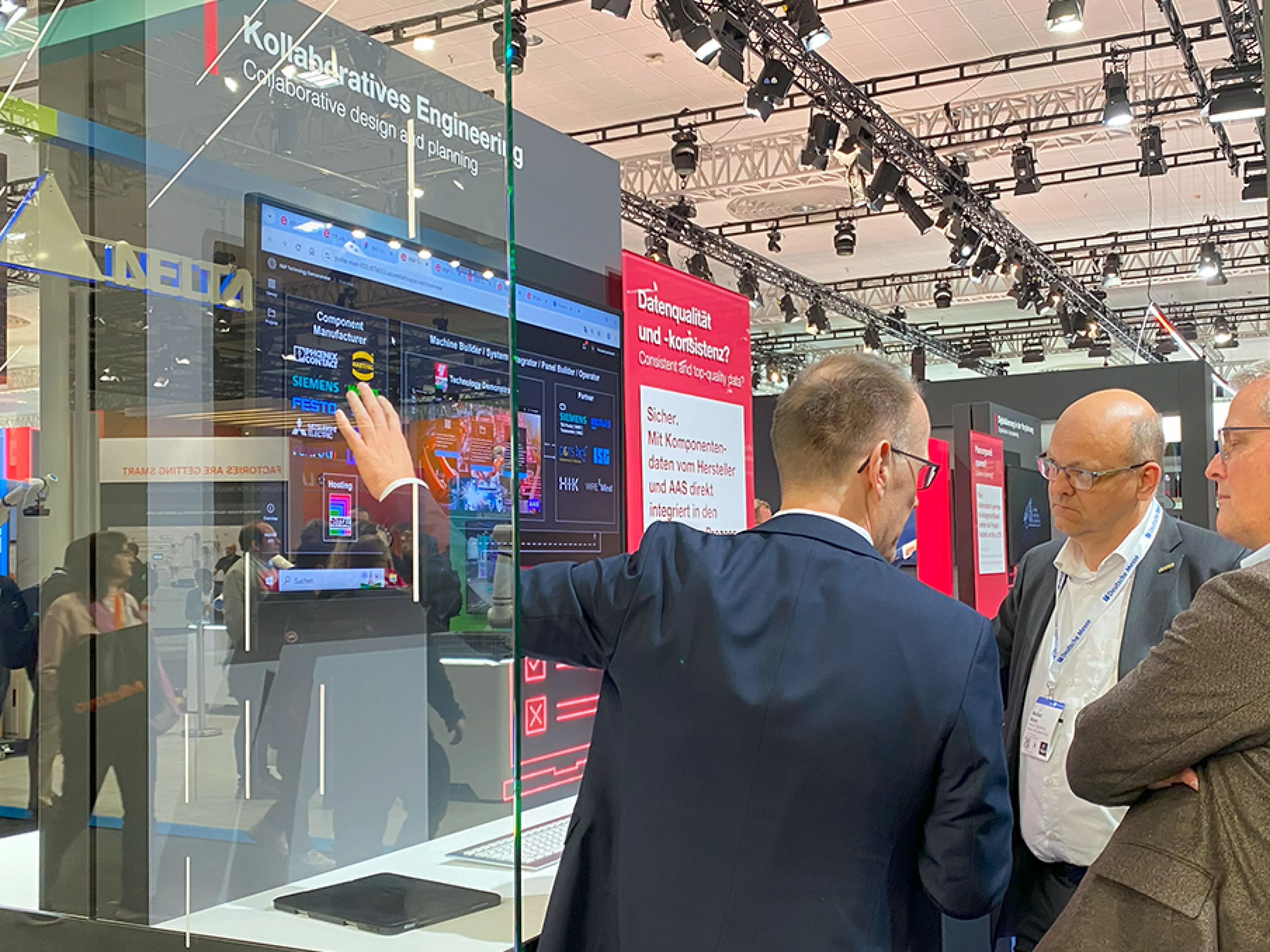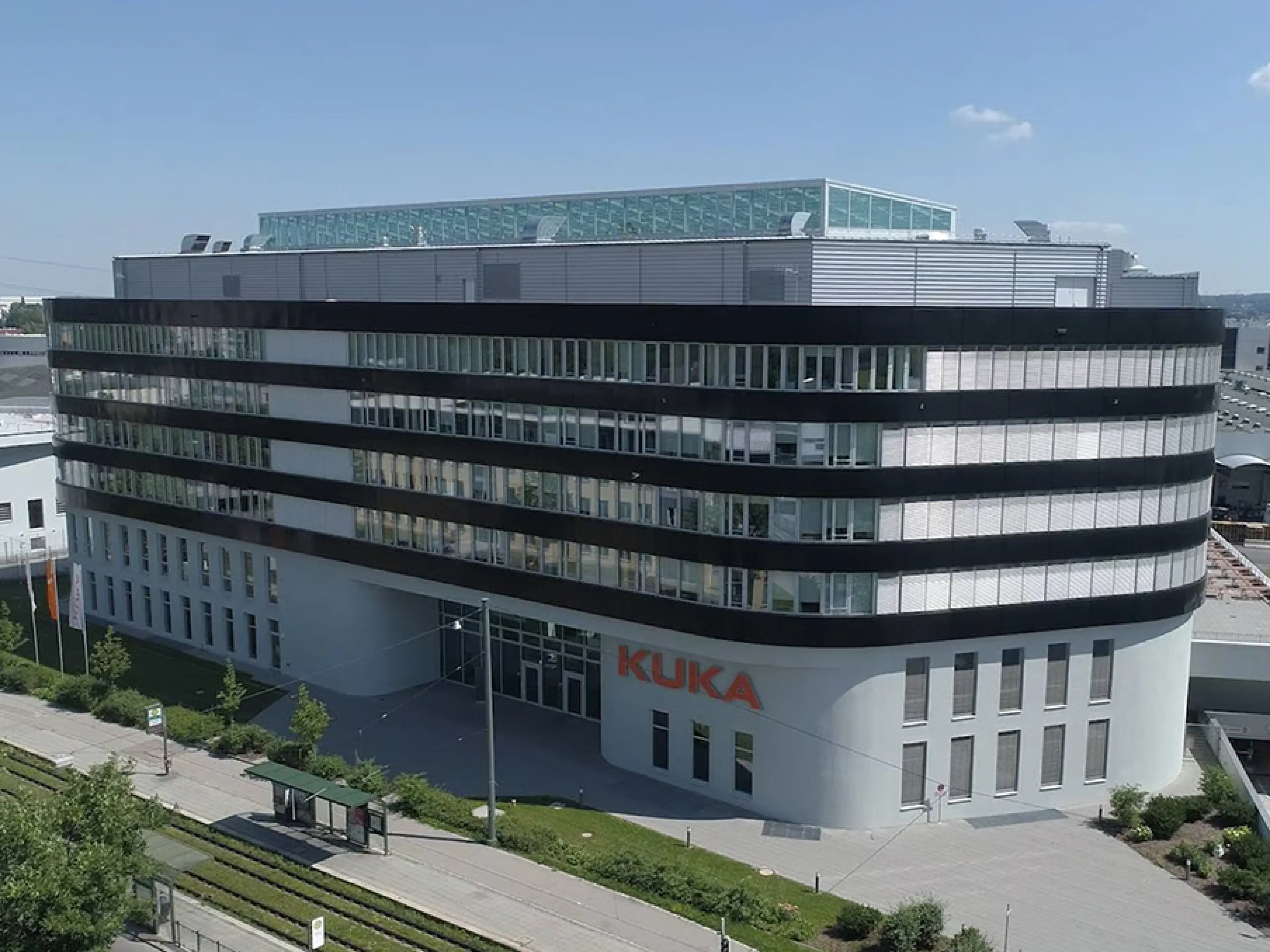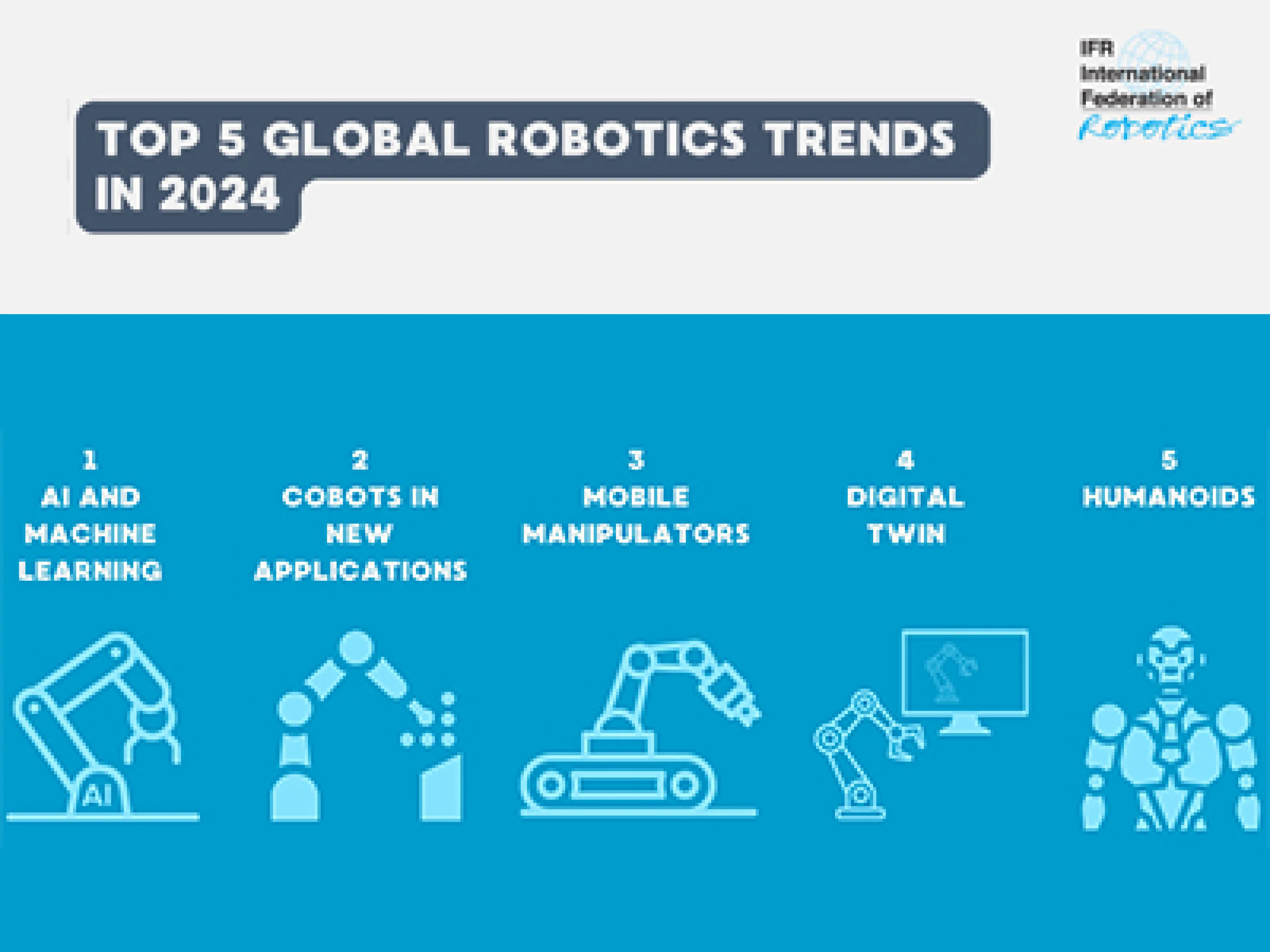
ADM has made a name for itself in the industry with intelligent automation solutions for industrial bakeries. The machine and plant manufacturer based in Warburg, Germany, is a firm believer in Motoman robots from Yaskawa. This is also the case in the project for the Görtz bakery in Ludwigshafen, where four robots handle frozen dough pieces in a very confined space. “Fewer and fewer bakeries are selling more and more baked goods,” sums up the Association of German Industrial Bakers in its 2024 industry report. As a result, individual companies must continue to expand their production capacities in order to remain competitive. In view of the shortage of personnel in food production, automation is therefore becoming increasingly important in industrial baked goods manufacturing.
Görtz bakery taps into efficiency potential through automation
The Görtz bakery in Ludwigshafen, Germany, also had to face these current challenges. In 2024, the bakery set out to tap new efficiency potential in its existing production. Together with ADM Automatisierungstechnik, those responsible went in search of new opportunities. Founded in 2022, the company specializes in forward-looking machine and robot systems for baked goods production.
Robotics meets complex requirements
Handling the dough pieces after freezing proved to be a promising approach. The dough pieces pass through one of two parallel freezer lines on slats. After freezing, these baking sheets were to be automatically removed at the freezer outlet and transferred to roller conveyors.
The project specifications were clearly defined:
- During handling, the dough pieces on the baking sheets had to remain in place to ensure consistently high product quality.
- The limited space available had to be taken into account.
- A high production output of 1,000 baking sheets per hour per freezer was specified.
- To enable continuous and efficient production, there should be no downtime when changing transport trolleys.
“After a thorough analysis, it quickly became clear that a purely mechanical solution would not provide the necessary compactness and flexibility to meet the special requirements of the Görtz bakery,” recalls ADM Managing Director Peter Dunschen. The decision was therefore made to introduce robotics. “This enabled a flexible and at the same time compact solution that perfectly satisfies both technical and spatial requirements.”
Robot-based system concept
The implemented system concept combines several innovative components in a single system. A customized conveyor system with stopper separation was installed in the discharge area. This supports the correct positioning of the dough pieces and ensures that they lie evenly and stably on the baking sheets before they are picked up by the robots. A total of four Motoman GP180 FGG industrial robots from Yaskawa are another core element of the system. The decisive factors in this decision were the speed and precision of the robots, as well as their load capacity of 180 kilograms and the model's long reach.
Robot series for the food industry
“GP” stands for ‘general purpose’ and thus for a wide range of applications. The six-axis robots can be operated without restriction in any installation position, and the robot cables can be routed sideways or through the base. An integrated media supply in the axes improves the design of the grippers and ensures maximum reliability in later operation.
Yaskawa has developed the “Motoman GP FGG” robot series specifically for the food industry. "FGG" refers to “Food Grade Grease” and thus to the exclusive use of lubricants that are approved for food production. “This was a crucial factor for us, as we had to ensure the highest hygienic standards,” stresses ADM’s Dunschen. “Yaskawa’s GP180-FGG robot perfectly fulfils these requirements, ensuring even higher quality and safety of the entire system.”
Yaskawa robot moves baking sheets at the freezer outlet
A robot at the end of each line takes over the removal of the baking sheets from the two parallel freezers. Using a layer gripper developed by ADM, the robots can pick up to six boards at a time and place them on a conveyor belt. The conveyor belt transports the baking sheets to the next station, the transport trolley loader.
The robots work at finely tuned speeds to ensure that the dough pieces do not shift on the baking sheets during handling. This fine-tuning of the movement sequences makes a decisive contribution to maintaining the quality of the dough pieces and ensuring consistently high production quality.
Yaskawa robots load the roll transport trolleys
Two additional “GP180” robots take over the precise stacking of the baking sheets onto the roll transport trolleys. They are equipped with a special layer gripper that not only picks up the stacks of planks, but also aligns them at the same time to ensure that the trolleys are loaded in the most space-saving and stable way possible. The gripper places the baking sheets correctly in the trolley without shifting or instability. A safety light curtain ensures the necessary safety.
A particularly ingenious feature of the solution enables the loading process of the transport trolleys to continue without interruption. When a transport trolley is full, the robot automatically switches to a second cell so that the loading process continues seamlessly. This ensures a continuous production flow and avoids downtimes that could impair the efficiency of the system. In the meantime, the operator has enough time to remove the fully loaded trolley and feed a new, empty trolley into the system.
Görtz has successfully entered the world of robotics
The Görtz bakery has made a successful entry into robot technology with the new ADM system for automated dough piece handling. The Ludwigshafen-based food manufacturer was not only able to improve its production process. It also made the best possible use of the available space while maintaining high quality and efficiency.
The solution has been successfully in use since November 2024. “The end customer was very satisfied right from the beginning,” summarizes ADM Managing Director Peter Dunschen and adds: “After comprehensive training and the first practical application, it quickly became clear that the process is easy and intuitive to use. Despite initial concerns, everyone now gets along well with the robots.”


